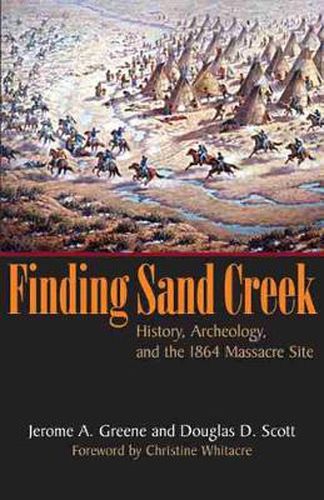Readings Newsletter
Become a Readings Member to make your shopping experience even easier.
Sign in or sign up for free!
You’re not far away from qualifying for FREE standard shipping within Australia
You’ve qualified for FREE standard shipping within Australia
The cart is loading…






The 1864 Sand Creek Massacre is one of the most disturbing and controversial events in American history. While its historical significance is undisputed, the exact location of the massacre has been less clear. Because the site is sacred ground for Cheyenne and Arapaho Indians, the question of its location is more than academic; it is intensely personal and spiritual.In 1998 the National Park Service, under congressional direction, began a research program to verify the location of the Sand Creek site. The team consisted of tribal members, Park Service staff and volunteers, and local landowners. In Finding Sand Creek, the project’s leading historian, Jerome A. Greene, and its leading archeologist, Douglas D. Scott, tell the story of how this dedicated group of people used a variety of methods to pinpoint the site. Drawing on oral histories, written records, and archeological fieldwork, Greene and Scott present a wealth of evidence to verify their conclusions.
Greene and Scott’s team study led to legislation in the year 2000 that established the Sand Creek Massacre National Historic Site.
$9.00 standard shipping within Australia
FREE standard shipping within Australia for orders over $100.00
Express & International shipping calculated at checkout
The 1864 Sand Creek Massacre is one of the most disturbing and controversial events in American history. While its historical significance is undisputed, the exact location of the massacre has been less clear. Because the site is sacred ground for Cheyenne and Arapaho Indians, the question of its location is more than academic; it is intensely personal and spiritual.In 1998 the National Park Service, under congressional direction, began a research program to verify the location of the Sand Creek site. The team consisted of tribal members, Park Service staff and volunteers, and local landowners. In Finding Sand Creek, the project’s leading historian, Jerome A. Greene, and its leading archeologist, Douglas D. Scott, tell the story of how this dedicated group of people used a variety of methods to pinpoint the site. Drawing on oral histories, written records, and archeological fieldwork, Greene and Scott present a wealth of evidence to verify their conclusions.
Greene and Scott’s team study led to legislation in the year 2000 that established the Sand Creek Massacre National Historic Site.